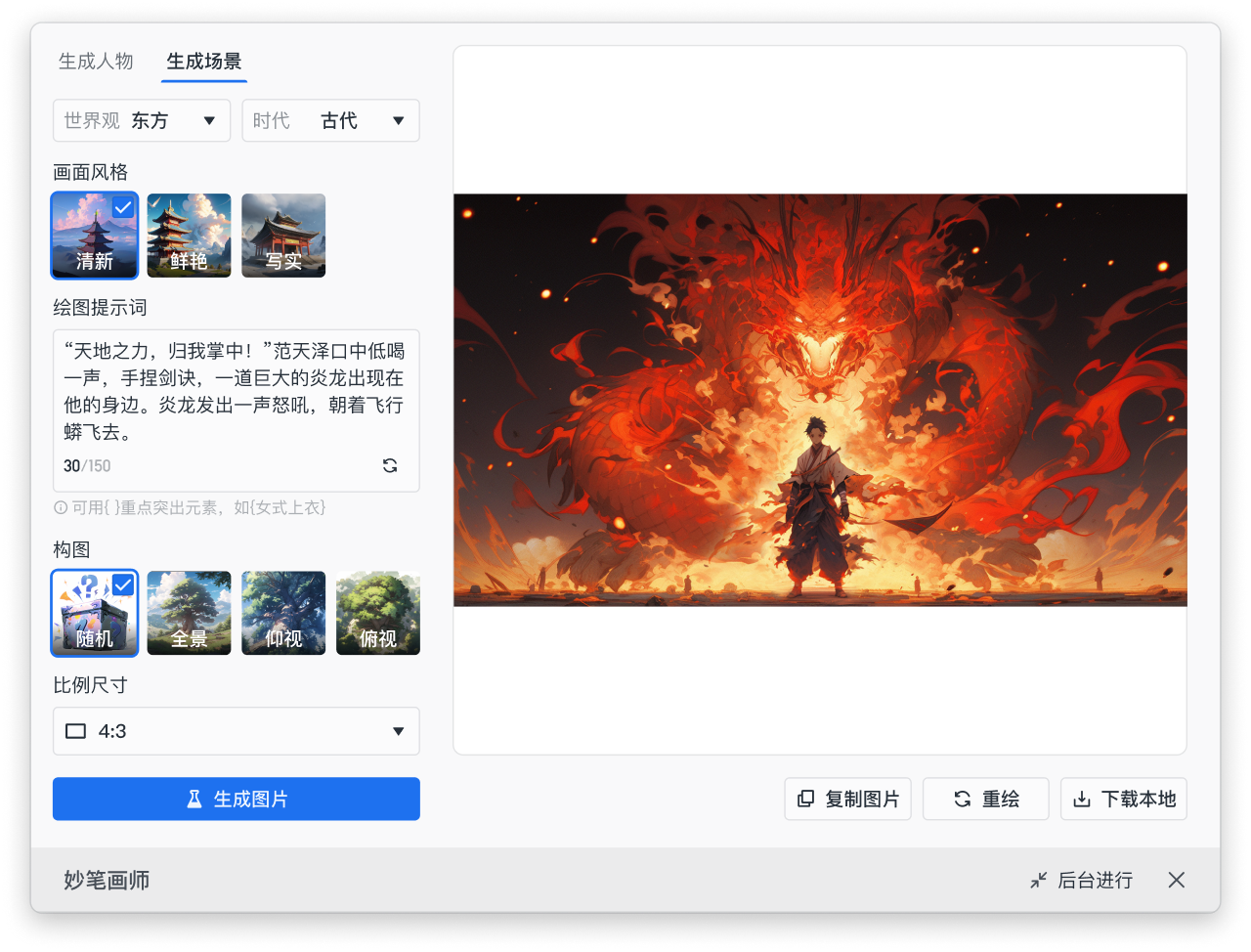“AIGC won’t replace writers. Writers will always be the protagonists.”
Those were the words of Xiaonan Hou, CEO of China Literature, the online literature arm of Chinese technology giant Tencent. They were articulated by Hou during an event organized on July 19 earlier this year to unveil the industry’s first large language model (LLM) called Yuewen Miaobi, and its derivative tool Writer’s Assistant Miaobi.
Hou likened the significance of AIGC, which stands for artificial intelligence-generated content to writers as the transition from manual driving to assisted driving. Writing literature is generally a time-consuming and strenuous process, involving tasks such as story development, scenario creation, and research. According to Hou, Yuewen Miaobi, through the tools it is integrated with, can assist writers in each of these areas, making their work less tedious to complete.
Writer’s Assistant Miaobi is relatively easy and straightforward for writers to use. By selecting the story’s setting, gender and type of characters, appropriate tags, and writing draft descriptions in a text box, the tool can generate sets of character names, appearances, personalities, and other characteristics.

The tool can also generate literary context using a similar feature. For example, in fantasy novels, the tool can generate information about treasure items, creatures, factions, among others, based on parameters provided by the writer. Even combat scenes can be described in detailed text passages solely with the tool.
However, Writer’s Assistant Miaobi, like other AI generation tools, still can’t replicate one key aspect of writers: creativity. Ultimately, what they can generate will depend on the data that the model has been trained with.
Online literature is also a product of long-term creation, with works generally comprising millions, if not tens of millions of words. While AIGC can aid writers in producing these works more efficiently, the overall structure of literary works, in terms of their narratives, tropes, and expressions, still require the purview of human writers to put together.
China Literature holds high expectations for AIGC. In June earlier this year, it initiated a new round of organizational restructuring, establishing four major business units with the objective of utilizing advanced technology, including AI, to accelerate the creation of original IP in online literature and web novels, as well as to facilitate the development of the literature IP ecosystem.
Cognizant that readers are gravitating towards more modally rich forms of literary content to establish stronger emotional connections with narratives and characters, the company also plans to employ AI and the new LLM in the development of derivative formats such as audiobooks, comics, videos, and more.
While these were difficult to produce in the past due to the sheer complexity of the production processes, AI tools can now be used to simplify such processes. According to Hou, China Literature has started using AI to create manga adaptations of novels. “Previously, coloring a single [manga] panel took around two hours, but now it can be completed within one hour,” Hou said.

According to Hou, the model and tool are still being tested internally, though more features are expected to be rolled out later this year or in 2024, subject to the results of the internal testing phase. The plan moving forward will be to evolve Yuewen Miaobi into a multimodal LLM and integrate it fully into the creative and IP ecosystems.
KrASIA Connection features translated and adapted content that was originally published by 36Kr. This article was written by Wang Yuchan for 36Kr.

